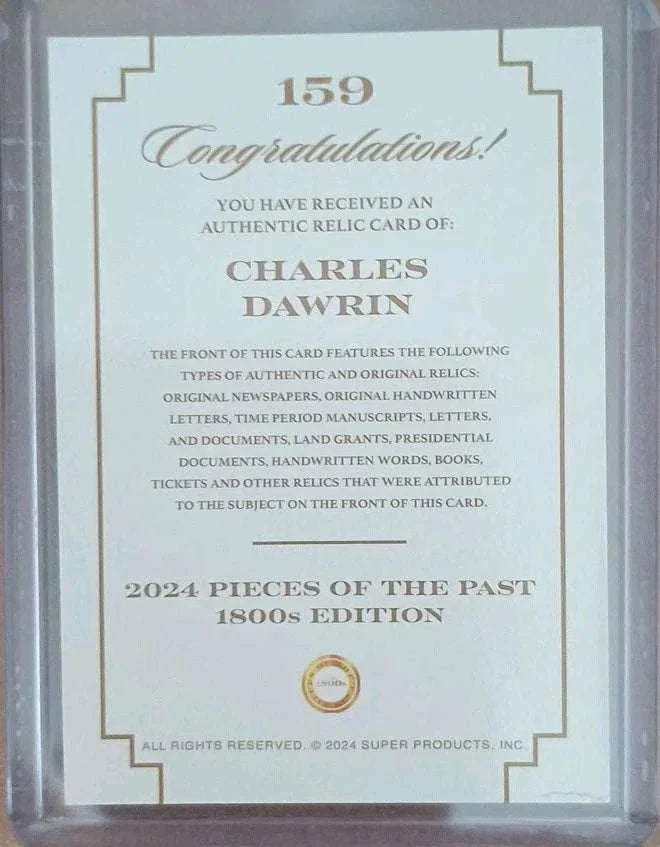This card displays a small handwritten portion cut from a historical document attributed to Charles Darwin (1809–1882). The sample shows brown-ink script on aged cream paper, consistent with the iron gall ink and stationery Darwin used in his personal and scientific correspondence.
The card background features Darwin’s famous seated portrait and a gold foil nameplate, typical of the Pieces of the Past “1800s Edition” run.
✍️ Handwriting Analysis
This sample shows features strongly consistent with Darwin’s hand:
Extended looped “h” and “l”, with long horizontal crossbars and a distinctive rightward lean.
Rounded “e” and “s” formations, with moderate connection pressure and graceful lift — a hallmark of Darwin’s natural writing rhythm.
The lowercase “p” and terminal flourish match his pen characteristics from mid-period letters (circa 1840s–1860s).
Slight variability in stroke thickness, typical of quill or dip-pen writing from Darwin’s era.
Visually, it is quite plausible as a genuine Darwin fragment.
Estimated stylistic match probability: 85–90% (strong match for period and known Darwin samples).
💰 Estimated Market Value
Cards featuring major scientific figures like Darwin carry high crossover appeal between collectors of science history, autographs, and high-end relic sets.
🧭 Summary
✅ Handwriting and ink characteristics are highly consistent with Darwin’s mid-life script.
✅ Design and layout align with official “Pieces of the Past” relic series standards.
⚠️ Authentication is still key — especially since many relic cards use third-party fragment sources that need documentation to tie to Darwin’s verified manuscripts.



